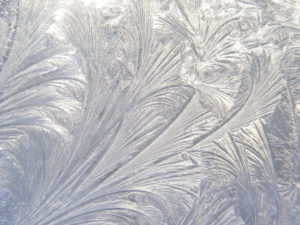
[From the last episode: There are many kinds of materials that you might want to add to a wafer, and there are many different ways of doing that.]
Last time, we looked at adding materials to a wafer, and we used the generic meaning of depositionA means by which materials can be added to a silicon wafer. to cover all the different ways. This time we do the reverse: we look at how to remove materials from a wafer. Here again, I use the word etchingA means by which materials can be removed from a silicon wafer. in a generic sense, even though there is at least one removal technique that isn’t, strictly speaking, a form of etching.
What’s Old is New
Etching is a centuries-old technique that, for most of history, was a way to create adornments or art. You use some material to block the things you don’t want etched and then apply an acid (typically) to etch the remaining exposed parts. It pretty much works the same way on a siliconAn element (number 14 in the periodic table) that can be a semiconductor, making it the material of preference for circuits and micro-mechanical devices. wafer, just at miniscule scales. And the blocking part happens as well – but we’ll defer that part of the discussion until we discuss photolithographyA way of creating patterns on a silicon wafer for selective deposition or etching. You can think of it as taking a picture of the pattern and having it show up on the wafer. In the industry, photolithography is often abbreviated as lithography. next time.
As with deposition, how you remove a material can depend on what material you wish to remove. It may also depend on what other materials are around that you don’t want removed. This is where selectivity is important: removing all of one substance and none of another. It’s never perfect in the real world, but it can be pretty close.
As an example, let’s say you have something labeled with a Sharpie pen that has some dirt on it. You want to remove that dirt, but you don’t want to get rid of the Sharpie marking. That’s easy: use water. Water can remove the dirt, but it won’t remove the Sharpie ink. If you do want to remove the marking, then you can use rubbing (isopropyl) alcohol for that. In this case, water is selective, removing only dirt and not marking. Alcohol may not be selective – it might remove the dirt and the marking.
Ways of Removing Materials
In this case, most of the techniques available could be described as a form of etching. We’ll start with the one that doesn’t.
- You can deposit certain materials that change their nature when exposed to light. You’ll find such materials on old-fashioned camera film, for example. And, not coincidentally, we use this in photolithography, which we’ll cover next. This material is called photoresist, and the exposed bits become different from the unexposed bits. Depending on the kind of resist, the exposed parts might “harden” or they might “soften.” In either case, you now have one part that’s “softer” (at least chemically, if not physically) than the other, and it can be removed in a process called development – just like developing film.
- The earliest ways of etching typically involved acid, and that goes for silicon wafersIn the context of making circuits, sensors, and actuators, a thin, round slice of pure silicon. Multiple devices will be made on it; it will then be sliced up to separate the individual chips. as well. Because these acids are liquid, this is referred to as wet etch.
- Wet etch was largely (although not completely) replaced by dry etch – technically called reactive ion etching (RIE) and most commonly called plasmaA fourth state of matter (the other three being solid, liquid, and gas). It’s characterized by atoms being stripped of their electrons; it takes a lot of energy to get into this state. etch. Instead of a liquid, a plasma is created that exposes the wafer surface to lots of ions and reactive chemicals that do the etching.
- There are times – especially for mechanical devices – when you want to drill deep holes that are roughly the same width at the top as at the bottom. This is hard to do well using the prior etch techniques, so a new one was developed. Appropriately, it’s called deep reactive ion etching (DRIE).
- Finally, just as we had with deposition, there’s a way to remove materials roughly one atomic layer at a time. It’s called atomic layer etching.
Now that we have these techniques under our belts, we can look at the final ingredient needed to make things out of silicon: photolithography.

Cool picture.